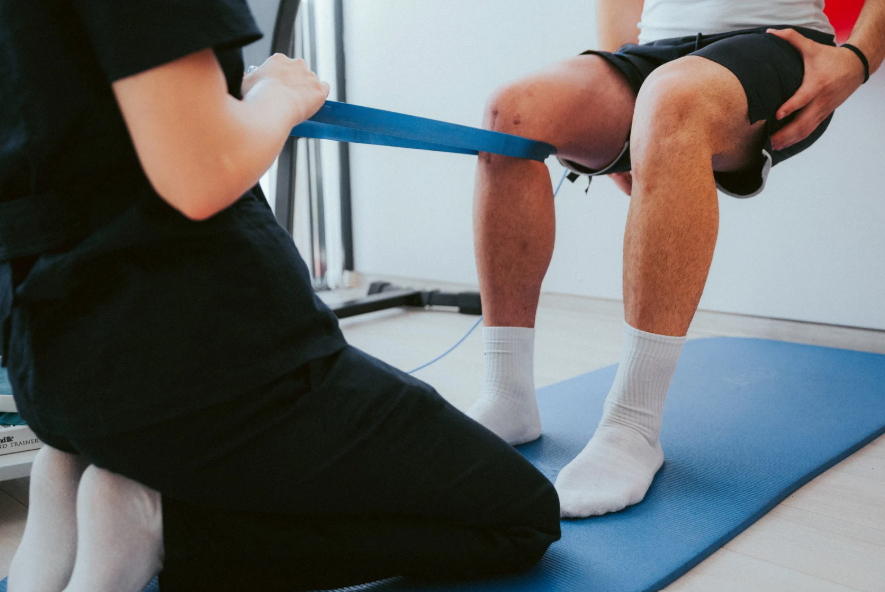When people think about recovering from injury, they often focus solely on the injured body part, the sprained ankle, the torn rotator cuff, or the fractured wrist. But what happens beyond the injury site is often just as important. Injury-related inactivity has widespread effects on the body, leading to reduced physical capacity, delayed return to work, and lingering fatigue, even after the injury itself has healed. At Specialised Health, we see this all the time: recovery isn’t just about healing tissue, it’s about restoring function across the whole body.
The Physiology of Disuse
Injury usually means reduced movement, and sometimes even complete immobilisation. This period of rest, while necessary to protect healing tissues, can rapidly trigger whole-body changes that affect far more than just the site of injury.
- Muscle atrophy is one of the most immediate and visible effects. Research has shown that even short-term disuse, such as ten days of limb immobilisation, can lead to significant muscle loss (Wall et al., 2013). This atrophy stems from reduced mechanical loading, which disrupts protein synthesis and accelerates protein breakdown.
- Mitochondrial downregulation follows closely. Mitochondria, often referred to as the cell’s energy factories, begin to decline in number and efficiency during inactivity. This reduces the body’s capacity for energy production, impacting endurance and contributing to the feeling of fatigue.
- Metabolic slowdown and cardiovascular deconditioning also occur. Resting metabolic rate can drop, insulin sensitivity may decrease, and blood volume and stroke volume decline, all of which compromise the body’s ability to respond to physical demands.
What’s most striking is how quickly these changes can occur. Within 1–2 weeks of reduced activity, systemic deconditioning is underway. And even if only one limb is immobilised, the effects are felt body-wide. We often see clients surprised by how much harder daily tasks feel, even when the injured area has technically ‘healed.’
Why It Matters for Return to Work
This cascade of changes doesn’t just affect how someone feels, it can have real consequences for their work capacity. The people we work with often experience:
- Reduced cardiovascular endurance
- Increased fatigue with light physical or cognitive tasks
- Difficulty recovering between work shifts
- Lower confidence in their physical ability
In many cases, these factors delay return to work, not because the injury hasn’t healed, but because the rest of the body isn’t ready.
The Role of Exercise Physiology
This is where our role comes in. An Exercise Physiologist doesn’t just look at the injury; we consider the whole person. We use staged, strategic reconditioning to safely rebuild strength, endurance, and capacity; both at the injury site and systemically.
Our programs include:
- Graded cardiovascular conditioning to improve stamina and reduce fatigue.
- Resistance training tailored to the individual’s stage of recovery, helping rebuild muscle mass and strength.
- Functional re-training that mimics work demands, whether that’s prolonged standing, lifting, or managing long hours on shift.
- Monitoring of recovery markers such as heart rate variability, perceived exertion, and fatigue trends.
It’s this broader focus that helps people not just return to work, but return with confidence and capacity.
Author: Tessa Nielsen
#exercisephysiology #exerciserehab #rehabilitation #lifeinsurance #incomeprotection #ctp #workcover #mobile #mobileexercisephysiology #fatigue #mentalhealth #cancer #musculoskeletal #injury #pain #physio #physiotherapy #Sydney #Brisbane #Melbourne #Adelaide #Auckland #Waikato #BayofPlenty #Wellington #Otago #Christchurch



